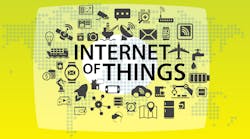After attending IMTS in the U.S. and the IoT Solutions World Congress (IoTSWC) in Barcelona, I noticed some differences in how the U.S. views technology compared to the European Union. Of course, how we use technology can offer insight into what a particular society views as important. It should be pointed out that IMTS is a manufacturing show, while the IoTSWC is an Internet of Things solutions show, but there are still takeaways on how different areas of the world view IoT.
IMTS hosts many companies, and many of them have some connected or IoT device. There was a focus on individual machines, or lines, with a general goal of achieving the fastest or least-intrusive integration with the largest return on investment (ROI). In short, U.S. IoT looks for the biggest points of money, or specific bottlenecks associated with money or production loss. This top-down approach makes some of these IoT products a no-brainer.
The IoTSWC show, in contrast, features IoT solutions as test beds. There is still an eye toward increasing production and revenue, but the thought process that goes into the design is different from what you see in the U.S. While ease of integration and ROI are important, the focus in with EU companies seem to find a solution, then let the money follow. This solutions- or goal-driven approach might yield a more intrusive integration, but it is what is necessary to obtain a goal.
Ultimately, the vibe I felt was that the U.S. views the IoT as a product, whereas the EU sees it more as a utility. At the IoTSWC there was the IoT of saving the Beluga whales and honeybees. The U.S. has IoT for agriculture, but it is geared toward saving money on pesticides while increasing crop yield. The benefit to the environment seems more like a bonus or afterthought. It almost seems like the U.S. is more Steve Jobs and the EU is more Steve Wozniak.
This isn’t a startling revelation. The U.S. is more litigious and money-oriented than the EU, and I’m not saying that that’s necessarily for the worse. However, when conducting business in different cultures it is important to understand how each of us are viewing technology. The U.S. is known for individualism and EU is more communal, and it’s interesting to see how this comes through both in our tech and manufacturing.
That being said, it’s also interesting to consider the predictions that, with the advent of automation, the population will eventually outgrow the number of available jobs. At that point, a new social contract will be needed, with community taking precedence over individualism out of necessity. It will be an interesting socioeconomic process to observe.

